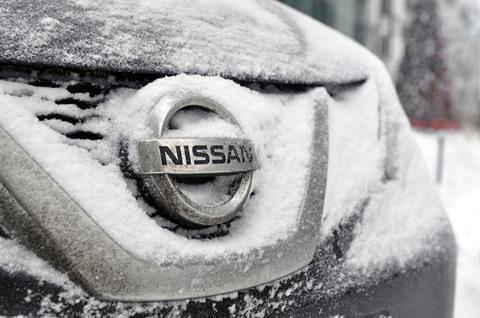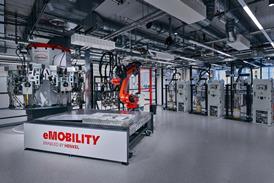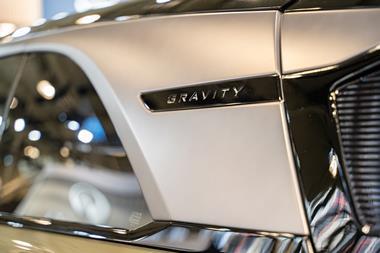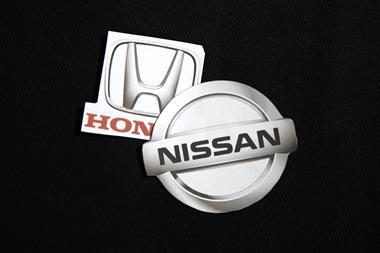Nissan is closing factories, slashing jobs and scaling back production as it fights to reverse sustained losses. CEO Makoto Uchida is under pressure after merger talks with Honda collapsed. But analysts warn the measures may not go far enough to secure the company’s future.

Nissan is taking drastic steps to stabilise its operations after back-to-back quarterly losses, closing factories, cutting shifts and reducing its executive ranks in an effort to trim costs. The measures, announced by CEO Makoto Uchida, include the closure of three manufacturing plants within the next two years, a 20% reduction in executive roles and job cuts affecting 9,000 employees worldwide.
The decision follows another disappointing financial quarter and comes after the collapse of merger talks with Honda. Uchida defended the move, saying Honda’s proposal to make Nissan a subsidiary was unacceptable.
“We were not confident that our autonomy would be preserved or that Nissan’s potential would truly be maximised,” he stated. However, Nissan remains open to alternative partnerships, including strategic projects with Honda. We will continue to focus on exploring strategic partnerships that aim to create new value.”
”The new measures aim to carve out nearly $3 billion in additional savings as Nissan seeks to create a sustainable cost structure”
Nissan factory closures and job cuts continue

The most immediate impact will be felt in Nissan’s manufacturing network. The first plant to close will be in Thailand in the first quarter of the next fiscal year starting in April. Another factory will be shuttered between October and December, while a third will cease operations by March 2027. Uchida did not disclose the locations of the other two plants. In the US, Nissan will reduce shifts at its Smyrna, Tennessee and Canton, Mississippi plants, cutting further jobs in response to sluggish demand. Additional layoffs will come from sales and administrative functions worldwide.
The restructuring will shrink Nissan’s global production capacity by one million units over the next two fiscal years, bringing it down to just four million. This includes a 500,000-unit reduction already implemented in China, where Nissan has struggled against intensifying competition from domestic brands. The cuts are expected to raise plant utilisation rates outside China to 85%, up from the current 70%.
Read More Nissan Stories
- Nissan’s green steel commitment to see 500% surge across Japan
- Nissan cuts jobs, Mitsubishi stake & reshapes EV strategy: Losses
- Poor financial results and slow EV transition forces Nissan to rethink plans
- Nissan to transition to low-CO2 emission aluminium by 2030
Despite these aggressive cost-cutting efforts, some analysts believe Nissan’s approach lacks decisiveness.
Losses deepen amid weak sales for the OEM
The scale of Nissan’s crisis became even clearer with its latest earnings report. Operating profit for the fiscal third quarter plummeted by 78% to ¥31.1 billion ($197.5 million), compared with ¥141.6 billion ($899.2 million) a year earlier. The company also recorded a net loss of ¥14.1 billion ($89.5 million), reversing a ¥29.1 billion ($184.8 million) profit in the same period last year. This marked Nissan’s second consecutive quarter in the red and forced it to downgrade its profit forecast for the year.
”Nissan originally expected to grow sales by one million vehicles by the end of the 2027 fiscal year under a strategy known as ‘The Arc’. That target has now been abandoned”
Worldwide retail sales fell 2.2% to 801,000 vehicles in the October-December period, with declines across most markets. While North American sales rose 9.8% to 318,000 units, other key regions struggled. European sales dropped 8.9% to 79,000 vehicles, and China fell 16.2% to 158,000. Global production shrank 12% to 742,235 vehicles.
Escalating incentive spending further undercut earnings. Nissan reintroduced controversial stair-step incentives, offering dealerships up to $1,000 per vehicle for meeting monthly sales targets. Once a hallmark of former Chairman Carlos Ghosn’s aggressive growth strategy, these discounts had been largely abandoned in 2021. Their return has raised concerns among retailers about eroding brand value and profitability.
Nissan finds itself in a fight for survival
Uchida first outlined his turnaround strategy in November after Nissan reported a net loss for the July-September quarter. It marked his third restructuring effort since taking over as CEO in December 2019, following Ghosn’s dramatic exit. The new plan aims to cut fixed costs by ¥300 billion ($1.91 billion) and reduce variable costs by ¥100 billion ($635.1 million), in an attempt to restore profitability at lower sales volumes.
Nissan originally expected to grow sales by one million vehicles by the end of the 2027 fiscal year under a strategy known as ‘The Arc’. That target has now been abandoned. Instead, the company is realigning production capacity with a more modest sales goal of 3.5 million vehicles—just 100,000 more than its current levels.
One of the more significant organisational changes is the appointment of Guillaume Cartier as Nissan’s first-ever Chief Performance Officer. In addition to his role as chairman of Nissan’s operations in Europe, Africa, the Middle East, India and Oceania, Cartier will now oversee global sales and profit targets.
”Despite aggressive restructuring, Nissan’s outlook remains grim. The company has cut its operating profit forecast for the full fiscal year by 79% to $762.1 million and expects to post a net loss of $508 million”
The new measures aim to carve out nearly $3 billion in additional savings as Nissan seeks to create a sustainable cost structure.
Bleak outlook for the year ahead
Despite aggressive restructuring, Nissan’s outlook remains grim. The company has cut its operating profit forecast for the full fiscal year by 79% to ¥120 billion ($762.1 million) and expects to post a net loss of ¥80 billion ($508 million). Global sales projections have been revised downwards to 3.4 million vehicles, from an earlier forecast of 3.65 million. Every major market, except North America, is expected to contract.
Inventory levels remain stubbornly high. Nissan’s vehicle stock has ballooned from 250,000 in March 2022 to 660,000 by the end of 2024. The company had planned to reduce this figure in the second half of the fiscal year but has so far failed to make significant progress.
For Nissan, the coming months will be critical. Uchida has made it clear that survival as an independent company is not guaranteed.
“Can we continue to survive as a standalone company? We’ve been discussing that for some time now. This is a big subject matter,” he admitted. “Without taboo, we have to explore all options.”






































No comments yet